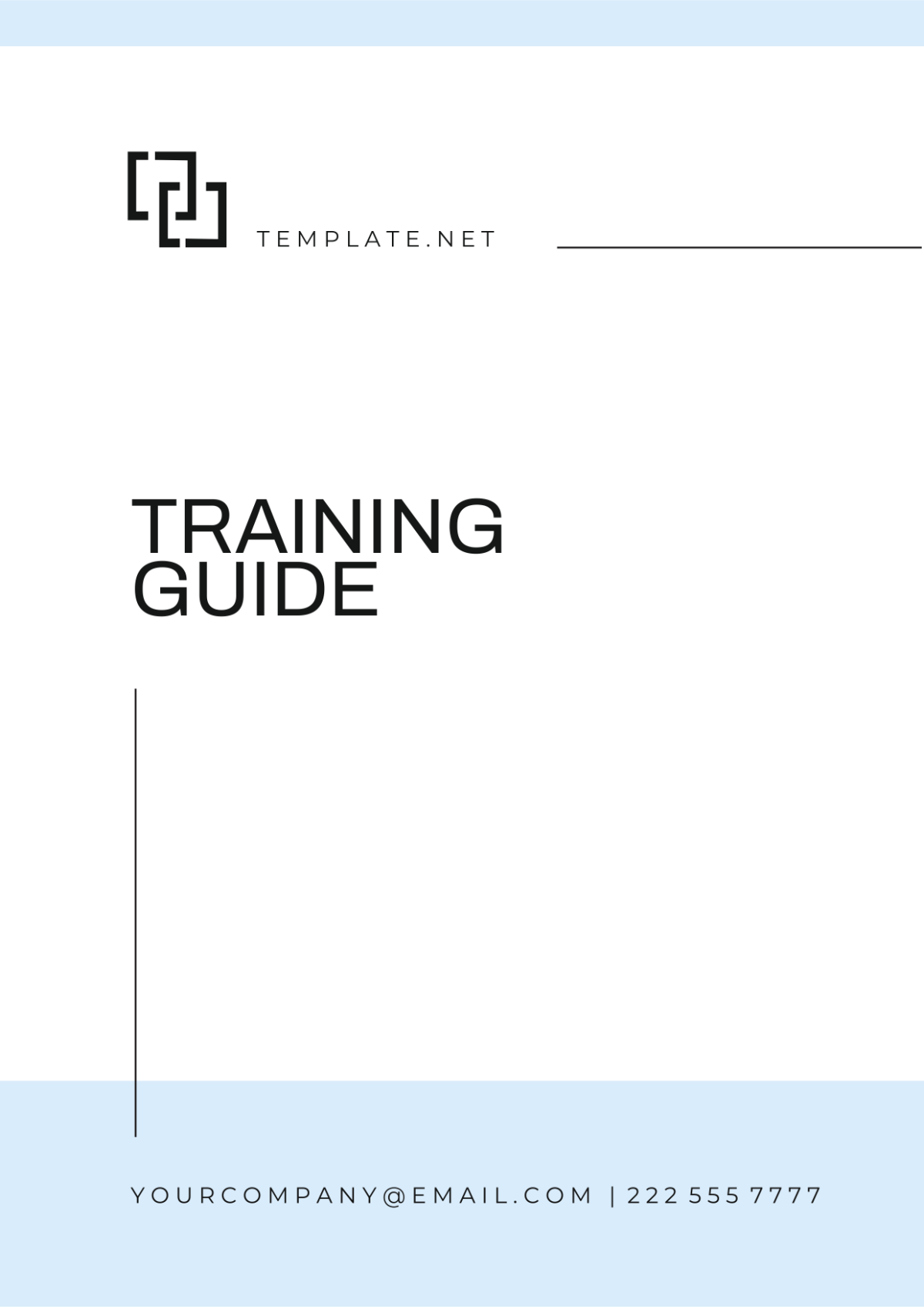Handyman Service Safety Guide
I. Introduction
This guide provides a comprehensive approach to managing safety risks across all service areas. By implementing these measures, [Your Company Name] ensures employee welfare, client satisfaction, and compliance with industry standards. It also serves as a training resource for new and experienced employees, establishing clear expectations and best practices.
II. Personal Protective Equipment (PPE)
Using appropriate personal protective equipment (PPE) is critical in minimizing injury risks and ensuring task-specific safety compliance.
Mandatory PPE Requirements: Employees are required to wear gloves, goggles, steel-toed boots, helmets, and other task-specific PPE to reduce exposure to hazards.
Condition Checks: Before use, PPE must be inspected for defects such as tears, cracks, or loose fittings to ensure it provides optimal protection.
Storage and Maintenance: Proper storage in designated areas will prolong the lifespan of PPE. Employees are also encouraged to report any damage immediately for prompt replacement.
III. Tool and Equipment Handling
Proper handling and maintenance of tools and equipment reduce the likelihood of workplace accidents and improve operational efficiency.
Inspection Protocols: Every tool and piece of equipment must be inspected before use to ensure it is in good working condition and free of defects.
Safe Usage: Employees must follow manufacturer instructions, avoid makeshift repairs, and use tools only for their intended purpose.
Storage Standards: Tools should be stored in organized, secure locations when not in use to prevent accidental injuries and unauthorized usage.
IV. Chemical Handling and Storage
Safe chemical handling is essential for preventing health risks and environmental harm. This section outlines best practices for managing hazardous substances.
Labeling: All chemical containers must have clear labels indicating their contents, hazards, and handling instructions. Unlabeled substances must not be used.
Storage Areas: Chemicals should be stored in well-ventilated, temperature-controlled cabinets away from open flames or flammable materials.
Spill Management: Work areas should be equipped with spill kits, and employees must be trained in using these kits effectively to contain and clean up spills.
Chemical Types and Storage
This table provides an overview of the different types of chemicals commonly used in handyman services, along with their designated storage areas and handling precautions.
Chemical Type | Storage Location | Handling Instructions |
|---|---|---|
Solvents | Flammable storage cabinet, cool, dry, ventilated area | Wear gloves, goggles, and use in a well-ventilated space |
Cleaning Agents | Chemical storage room, away from heat sources | Wear gloves and goggles, avoid mixing with other chemicals |
Pesticides | Secure outdoor storage, away from food and living areas | Always wear PPE, handle with caution to avoid exposure |
Batteries | Dry, cool storage area | Ensure batteries are properly sealed and stored upright |
V. Ladder and Height Safety
Working at heights is inherently risky, and following established protocols ensures employee safety and minimizes fall hazards.
Inspection: All ladders must be checked for stability, cracks, and secure locking mechanisms before use. Defective ladders must be tagged and removed from service.
Positioning: Ladders should be placed on even, non-slippery surfaces and anchored securely to avoid movement during use.
Three-Point Contact Rule: Employees must maintain three points of contact (two feet and one hand, or two hands and one foot) at all times to ensure stability.
VI. Client Communication Protocols
Effective communication with clients ensures that everyone involved understands safety measures and prevents misunderstandings during service.
Project Briefing: Before commencing work, employees must explain potential risks and outline safety measures to clients, addressing any concerns they may have.
Restricted Areas: Clearly define and mark hazardous zones where clients and pets should not enter during service activities.
Emergency Contacts: Share emergency contact numbers with clients so they can report any issues or seek immediate assistance during or after the service.
VII. Emergency Response Procedures
Responding swiftly and effectively to emergencies reduces harm and prevents escalation of potentially dangerous situations.
Incident Reporting: All accidents, injuries, or unsafe conditions must be reported immediately to supervisors and documented thoroughly.
Evacuation Plans: Employees must familiarize themselves with site-specific evacuation routes and muster points to ensure efficient emergency egress.
First Aid: First aid kits should be accessible on all job sites, and employees must receive training in basic first aid to handle minor injuries promptly.
VIII. Training and Education
Comprehensive training equips employees with the knowledge and skills needed to maintain a safe work environment and adapt to new safety protocols.
Initial Safety Training: New employees undergo rigorous safety training that covers all aspects of their job responsibilities before starting fieldwork.
Ongoing Education: Regular refresher courses are conducted quarterly to update employees on new safety regulations, tools, and technologies.
Specialized Certification: Employees handling specialized tools or chemicals are required to maintain relevant certifications, ensuring expertise and compliance with safety standards.
Training Schedule and Programs
This table outlines the structured training schedule for [Your Company Name] employees, focusing on different areas of safety and operational best practices.
Training Program | Target Audience | Frequency |
|---|---|---|
New Employee Safety Orientation | All new hires | Once upon hiring |
Chemical Handling & Storage | All staff handling chemicals | Quarterly |
Tool Safety & Maintenance | Handyman & Maintenance staff | Bi-annual |
First Aid & CPR Training | All staff | Annually |
Fire Safety and Evacuation | All staff | Annually |
IX. Waste Disposal Guidelines
Proper waste disposal practices safeguard the environment and comply with regulatory requirements. This section outlines waste management protocols.
Segregation: Employees must separate general waste, recyclables, and hazardous materials into designated bins to streamline disposal processes.
Disposal Procedures: All waste, particularly hazardous materials like paint or solvents, must be disposed of following local regulations to prevent contamination.
Documentation: Maintain detailed records of waste disposal activities, including dates, quantities, and methods, to ensure compliance during inspections or audits.
X. Continuous Improvement and Feedback
Continuous improvement in safety measures is achieved through regular evaluations and incorporation of feedback from employees and clients.
Employee Input: Encourage employees to share suggestions for enhancing safety procedures based on their on-site experiences.
Performance Metrics: Analyze trends in safety incidents and near-misses to identify recurring issues and develop targeted interventions.
Policy Revisions: Update safety policies annually or as needed to reflect evolving industry standards and new challenges.
By implementing this safety guide, [Your Company Name] ensures the protection and well-being of employees and clients while delivering reliable and professional handyman services. Commitment to these protocols reflects the company’s dedication to operational excellence, fostering trust, and maintaining a secure work environment.

















































